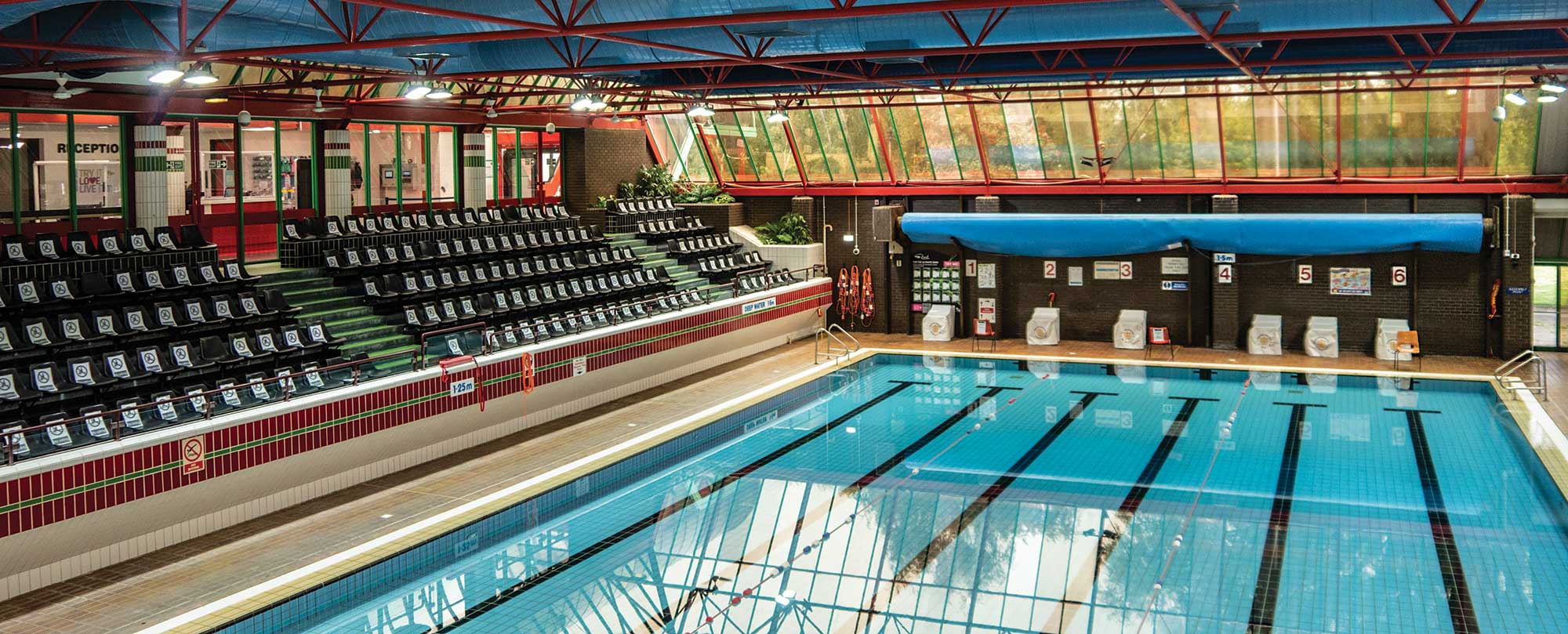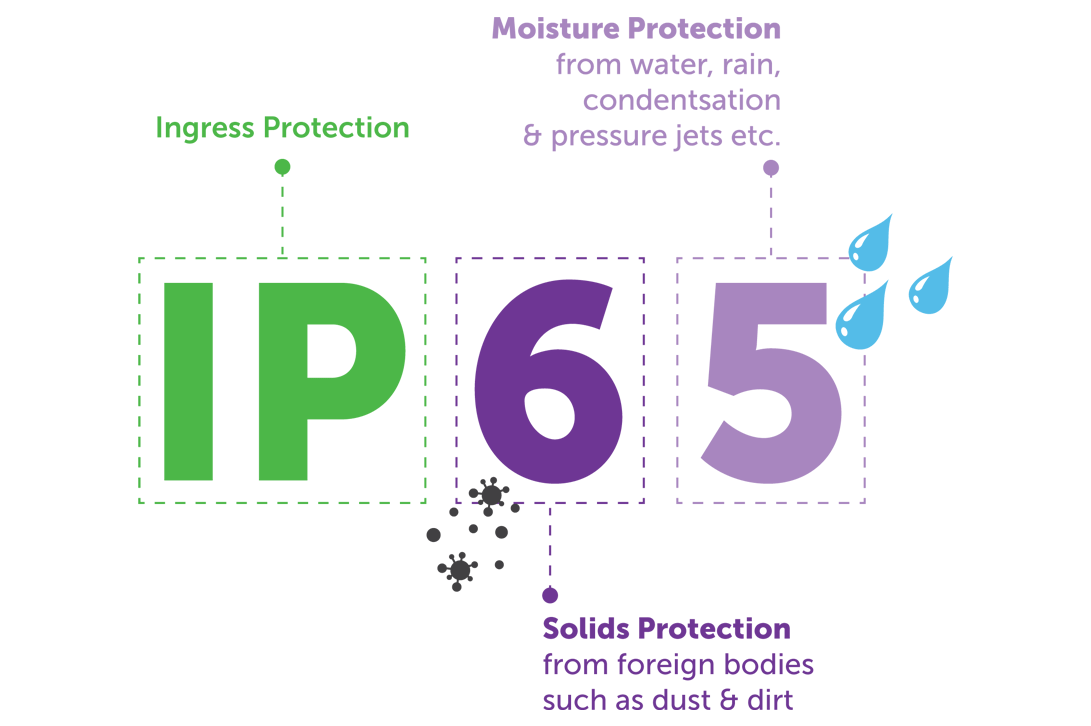IP Ratings for LED Lighting Explained

When it comes to choosing lighting for your business you will more than likely consider the style and light levels the luminaires provide. But did you know it is important to consider the level of protection needed against the elements it will be exposed to.
The term IP Rating when associated with LED lighting refers to this level of protection the device has against water and dust etc.
Some applications such as outdoor lighting or washroom areas will require a higher IP rating than an office for example.
By understanding the role of IP ratings this will enable you to make a more informed decision when choosing luminaires for a specific application to ensure they are safe and reliable in the environment in which they will be used.
What are IP Ratings?
IP Rating also known as Ingress Protection Rating measures how resistant a device is against solids and liquids. This standard used to define the degree of sealing protection provided by electrical enclosures against the ingress of dust, dirt, and water. The IP rating is a two-digit code, where the first digit represents the degree of protection against solid objects, and the second digit represents the degree of protection against liquids. The higher the IP rating, the greater the level of protection against environmental factors.
The IP rating system is a defined international standard developed by the International Electrotechnical Commission (IEC Standard 60529, British BS EN 60529:1992, European IEC 60509: 1989). The system was first published in 1976 and has since become widely used in various industries, including the commercial and industrial LED lighting sector.

What the numbers mean in IP Ratings
Here is an easy-to-understand breakdown of levels of protection.
The first digit of the IP rating indicates the degree of protection against solid objects, such as dust and dirt. It ranges from 0 to 6, with 0 indicating no protection and 6 indicating complete protection
The following table provides a detailed explanation of each level of protection:
| IP Rating | Description |
|---|---|
| IP0X | No protection against solid objects |
| IP1X | Protection against solid objects larger than 50mm in diameter |
| IP2X | Protection against solid objects larger than 12.5mm in diameter |
| IP3X | Protection against solid objects larger than 2.5mm in diameter |
| IP4X | Protection against solid objects larger than 1mm in diameter |
| IP5X | Protection against dust, limited ingress allowed (no harmful deposit) |
| IP6X | Complete protection against ingress of dust |
The second digit of the IP rating indicates the degree of protection against liquids, such as water. It ranges from 0 to 9, with 0 indicating no protection and 9 indicating complete protection.
The following table provides a detailed explanation of each level of protection:
| IP Rating | Description |
|---|---|
| IPX0 | No protection against liquids |
| IPX1 | Protection against vertically falling drops of water |
| IPX2 | Protection against vertically falling drops of water when the enclosure is tilted up to 15 degrees |
| IPX3 | Protection against spraying water at an angle up to 60 degrees from vertical |
| IPX4 | Protection against splashing water from any angle |
| IPX5 | Protection against water jets from any direction |
| IPX6 | Protection against powerful water jets from any direction |
| IPX6K | Protection against powerful water jets from any direction against the enclosure under elevated pressure |
| IPX7 | Protection against immersion up to 1 meter for 30 minutes |
| IPX8 | Protection against continuous immersion in water |
| IPX9 | Protected against close-range, high-pressure, high-temperature spray-downs |
Right Luminaire For The Job
Deciding on the the level of protection you need depends on what type of environment you need the luminaire to withstand.
For example, IP65 lights are suitable for general outdoor use, as they are protected against water jets from any direction. IP66 lights are suitable for use in harsh environments, as they are protected against continuous immersion in water.
So, when looking at your business’ lighting requirements you need to choose between IP65 and IP66 based on whether the luminaire will encounter pressurised water or not. If it does then an IP66 enclosure is the correct choice. However, if your device is unlikely to face any pressurised water then an IP65 rated enclosure will do the job.
Do you have a food processing site? If the answer is yes, then you may consider the highest IP Rating of IP69K for your application. IP69K luminaires offer the greatest level of protection against ingress allowing you to high-pressure wash the fittings and even sanitize them. Perfect for many food manufacturing environments where high pressure cleaning is necessary.
Other Factors to Consider
It is important to note that while the IP rating provides a general indication of a luminaire’s resistance to environmental factors, it does not guarantee protection against all types of damage. Additionally, the IP rating only applies to the luminaire itself and does not consider other factors, such as the condition of the power source or the quality of the electrical connection.
Summary
In summary, IP ratings are a measure of how resistant an LED light fitting is to dust, dirt, and water. The higher the IP rating, the greater the level of protection.
When choosing LED lights for your business, it is important to consider the IP rating to ensure that the lights will be safe and reliable in the environment in which they will be used.
Here are some tips for choosing the right IP rated LED lights for your needs:
- Consider the environment in which the lights will be used. If the lights will be exposed to harsh weather conditions, such as rain, snow, or dust, you will need lights with a high IP rating.
- Consider the type of application. If the lights will be used in a commercial setting, such as a warehouse or factory, you will need lights with a high IP rating to protect them from dust and debris.
- Consider the budget. IP rated LED lights can range in price from a few dollars to hundreds of dollars. Choose lights that fit your budget and your needs.
By following these tips, you can choose the right IP rated LED lights for your home or business and ensure that they will be safe and reliable for years to come.
